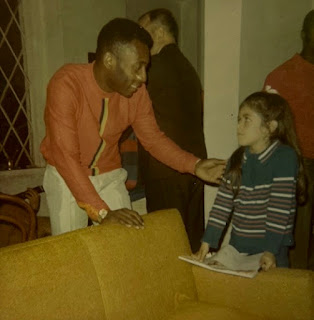Call for chapters AI, Robotics and Synthetic Emotions
Handbook of Research on Synthetic Emotions and Sociable Robotics: New Applications in Affective Computing and Artificial Intelligence
A book edited by Jordi Vallverdú, Ph.D. & David Casacuberta, Ph.D, Autonomous University of Barcelona
Introduction
Emotions are not only a basic part of rational processes, but a necessary and the most efficient way to establish a good communication and work atmosphere between humans and machines. Our attitudes towards machines are similar to those related to human beings, but we need the machine’s feedback. Therefore, first attempts to embed emotions into machines were focused on to creating machines which could simulate showing human emotional states. A second wave of research is being developed today, trying to create true synthetic emotions: that is, artificial systems with emotional regulatory systems. There are several ways to integrate emotions into artificial environments (computers and robotics), which we will cover with this new book, from robotics to artificial intelligence or ambient intelligence. This book covers all the efforts on the project to integrate emotions into artificial systems, as well as emotion simulations and emotion synthetic developments. Beyond technical aspects of these researches, we include the philosophical thoughts of several specialists about the nature of synthetic emotions. We will also review how synthetic emotions can and are actually being used in art projects, analyzing how robots can become part of an intelligent installation, or how algorithmic systems to produce artwork can benefit from an emotional implementation in them.
The Handbook will be most helpful as it provides comprehensive coverage and definitions of the most important issues, concepts, trends and technologies in artificial emotions and related topics. This important new publication will be distributed worldwide among academic and professional institutions and will be instrumental in providing researchers, scholars, students and professionals access to the latest knowledge related to artificial emotions. Contributions to this important publication will be made by scholars throughout the world with notable research portfolios and expertise.
Coverage
The Handbook will provide a compendium of terms, definitions and explanations of concepts, processes and acronyms. Additionally, this volume will feature chapters (8,000-10,000 words) authored by leading experts offering an in-depth description of key terms and concepts related to different areas, issues and trends in information science and technologies in modern organizations worldwide.
Recommended topics include, but are not limited to, the following:
Invited Submissions
Individuals interested in submitting chapters (8,000-10,000 words) on the above-suggested topics or other related topics in their area of interest should submit via e-mail a 2-3 page manuscript proposal clearly explaining the mission and concerns of the proposed chapter by February 5th, 2007.
We strongly encourage other topics that have not been listed in our suggested list, particularly if the topic is related to the research area in which you have expertise. Upon acceptance of your proposal (communication on February 15th 2008), you will have until April 28th, 2008, to prepare your chapter of 8,000-10,000 words and 7-10 related terms and their appropriate definitions.
Guidelines for preparing your paper and terms and definitions will be sent to you upon acceptance of your proposal. Please forward your e-mail of interest including your name, affiliation and a list of topics (5-7) on which you are interested in writing a chapter to Jordi Vallverdú or David Casacuberta, editors, at jordi.vallverdu@uab.cat or david.casacuberta@uab.cat no later than February 5th 2007. You will be notified about the status of your proposed topics by February 15th 2008.
This book is tentatively scheduled for publishing by Information Science Reference (formerly Idea Group Reference), www.info-sci-ref.com, an imprint of IGI Global (formerly Idea Group, Inc.) in 2010.
Inquiries and submissions can be forwarded electronically (Word document) or by mail to:
Jordi Vallverdú, jordi.vallverdu@uab.cat or
David Casacuberta, david.casacuberta@uab.cat
All technical details and publishing deadlines at:
http://jordi.vallverdu.googlepages.com/home
http://www.igi-pub.com/requests/details.asp?ID=258
A book edited by Jordi Vallverdú, Ph.D. & David Casacuberta, Ph.D, Autonomous University of Barcelona
Introduction
Emotions are not only a basic part of rational processes, but a necessary and the most efficient way to establish a good communication and work atmosphere between humans and machines. Our attitudes towards machines are similar to those related to human beings, but we need the machine’s feedback. Therefore, first attempts to embed emotions into machines were focused on to creating machines which could simulate showing human emotional states. A second wave of research is being developed today, trying to create true synthetic emotions: that is, artificial systems with emotional regulatory systems. There are several ways to integrate emotions into artificial environments (computers and robotics), which we will cover with this new book, from robotics to artificial intelligence or ambient intelligence. This book covers all the efforts on the project to integrate emotions into artificial systems, as well as emotion simulations and emotion synthetic developments. Beyond technical aspects of these researches, we include the philosophical thoughts of several specialists about the nature of synthetic emotions. We will also review how synthetic emotions can and are actually being used in art projects, analyzing how robots can become part of an intelligent installation, or how algorithmic systems to produce artwork can benefit from an emotional implementation in them.
The Handbook will be most helpful as it provides comprehensive coverage and definitions of the most important issues, concepts, trends and technologies in artificial emotions and related topics. This important new publication will be distributed worldwide among academic and professional institutions and will be instrumental in providing researchers, scholars, students and professionals access to the latest knowledge related to artificial emotions. Contributions to this important publication will be made by scholars throughout the world with notable research portfolios and expertise.
Coverage
The Handbook will provide a compendium of terms, definitions and explanations of concepts, processes and acronyms. Additionally, this volume will feature chapters (8,000-10,000 words) authored by leading experts offering an in-depth description of key terms and concepts related to different areas, issues and trends in information science and technologies in modern organizations worldwide.
Recommended topics include, but are not limited to, the following:
- Emotions
- Affective Computing
- Sociable Robots
- Synthetic Emotions
- AI’s Emotions
- Artificial Emotions
- Digital arts and emotions
- Art and AI
- Emotional interfaces
Invited Submissions
Individuals interested in submitting chapters (8,000-10,000 words) on the above-suggested topics or other related topics in their area of interest should submit via e-mail a 2-3 page manuscript proposal clearly explaining the mission and concerns of the proposed chapter by February 5th, 2007.
We strongly encourage other topics that have not been listed in our suggested list, particularly if the topic is related to the research area in which you have expertise. Upon acceptance of your proposal (communication on February 15th 2008), you will have until April 28th, 2008, to prepare your chapter of 8,000-10,000 words and 7-10 related terms and their appropriate definitions.
Guidelines for preparing your paper and terms and definitions will be sent to you upon acceptance of your proposal. Please forward your e-mail of interest including your name, affiliation and a list of topics (5-7) on which you are interested in writing a chapter to Jordi Vallverdú or David Casacuberta, editors, at jordi.vallverdu@uab.cat or david.casacuberta@uab.cat no later than February 5th 2007. You will be notified about the status of your proposed topics by February 15th 2008.
This book is tentatively scheduled for publishing by Information Science Reference (formerly Idea Group Reference), www.info-sci-ref.com, an imprint of IGI Global (formerly Idea Group, Inc.) in 2010.
Inquiries and submissions can be forwarded electronically (Word document) or by mail to:
Jordi Vallverdú, jordi.vallverdu@uab.cat or
David Casacuberta, david.casacuberta@uab.cat
All technical details and publishing deadlines at:
http://jordi.vallverdu.googlepages.com/home
http://www.igi-pub.com/requests/details.asp?ID=258





I´m still a little bit skeptic about the possibility to recreate, generate or produce synthetic emotions in machines.
ReplyDeleteIt is possible to create or repdouce the pragmatic function some visual dysplay arrange by gears, tubes etc. but not the experiential or inner component.
Emotions are a multifacetic phenomenon and depending on how you describe emotions you can capture some aspect or another. But essentially emotions are possible because (neuro)hormones substances, biological tissue and receptors, homeostasis regulators, feedback processes, blood pressure, and other orgnaic stuff not yet available in hardware.
So in order to advance in our knoweledge about how to implement emotions in machines we have to create hybrids (organics + synthetics), but how? is the question
Dear Anonymous,
ReplyDeletehonestly, I entirely share your scepticism,
cheers,
Luciano
Thanks (it is an honour that a professor supports my thinking)), Professor Floridi for being in the same side as me in this matter.
ReplyDeleteDon't forget to include Prof. Dörner's PSI-Theory. I think he is furthest in developing artifical emotions, modeling most of the human brain. He has created simulations of both single individuals as well es their social interactions.
ReplyDeleteYou can find one of his english texts here http://advancedmagic.de/download/psiemo_whitepaper_doerner.pdf
I'm about to use his technology for natural language processing.
Peter Fankhaenel